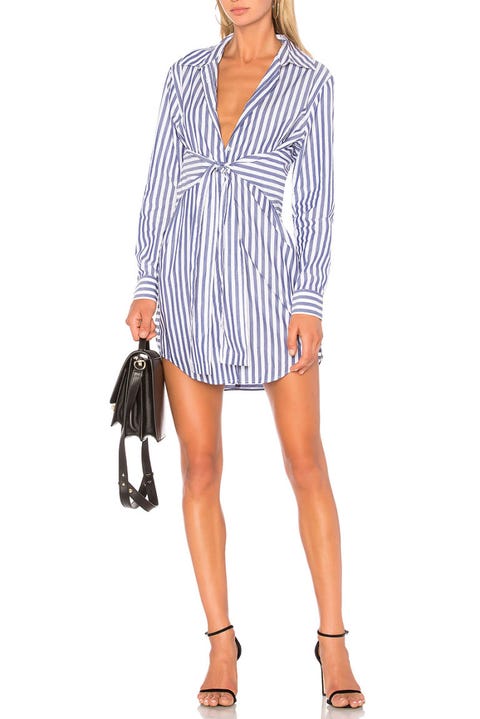When you hear the term "preppy," you might envision tweed suits, pleated skirts, and family vacations to Nantucket. This aesthetic is really a way of life for individuals who appreciate conventional, classic activities such as for example sailing, golf, and tennis.
Preps traditionally originate from affluent backgrounds and attend Ivy League institutions. However, the design is now favored by a wider variety of menswear enthusiasts.
Definition
Prep is a contemporary term for the style and way of life connected with students and alumni of traditional private Northeastern college preparatory institutions. The culture, sometimes referred to as WASP or traditional American culture, has extended beyond the historic upper-class Northeastern families. what does being preppy mean , people of most ages can appreciate being a part of this subculture by adopting the fundamental planning elements.
An authentic prep observes traditions that have been passed down through the generations. The term prep has multiple meanings, but is typically used to describe a method that's well-put-together, neat, and nautical in character. Moreover, being truly a genuine prepper requires averting certain behaviors and activities, such as for example smoking and excessive drinking. A genuine prepper will also avoid expressing strong political views and exhibiting a liberal attitude.
what does dressing preppy mean as Brooks Brothers, J. Crew, LL Bean, and Ralph Lauren define the conservative aesthetic. Furthermore, the preppy style includes items such as shetland wool sweaters, cotton khaki pants, topsider shoes, and Gladstone purses. A typical prep will have a sallow complexion and avoid donning vibrant or excessively tailored clothing.
A conservative may also have a specific types of speech, vocabulary, and apparel, together with etiquette and mannerisms that reflect an affluent upbringing. An authentic conservative will be humorous and not take themselves too seriously. They will also be highly educated and avid readers of books, periodicals, and newspapers. They'll possess a passion for classical music and an appreciation for the arts.
Origins

Preppy started in New England private institutions and Ivy League universities. Students embraced the casual design of dress, incorporating athletic attire from their athletic pursuits with traditional attire. In addition, they donned headwear, sashes, and badges to represent their affiliation having an institution or sport. This uniformity of appearance and adherence to codes, traditions, and sports contributed to the development of a sense of community among preppies.
Due to the enduring prevalence of the apparel design, the term prep has been related to anyone who wears these garments. It is more of a social class than an apparel trend, and includes students from the center to upper classes and also the affluent. Today, the term is frequently used to spell it out somebody who purchases at J. Crew or Abercrombie & Fitch and dresses much like students of the 1960s and 1970s.
In the past decade, many shrewd menswear brands have adopted the preppy look, expanding the style beyond its traditional WASP origins. The incorporation of skate, punk, and hip-hop has led to a more inclusive interpretation of what this means to be preppy. This updated version focuses less on a particular clothing brand and more on the ethos of the era: an aura of nonchalance, sophistication, and good humor.
Style
Preppy fashion emphasizes a streamlined silhouette and a palette of neutral and subdued hues. Men's conservative attire includes button-down shirts, blazers, and polo shirts with long sleeves. Preppy fashion also contains wool sweaters worn over collared shirts, khaki trousers with tartan elements and loafers. For a sophisticated appearance, accessories such as classic eyeglasses, the newest phone, a leather wallet, and purses are essential.
Preppy clothing is typically made up of light blues, tans, and navy blues. Frequently, the colors are coupled with white and gray, giving the ensembles a light and ethereal feel. Many conservative women and men favor gingham, argyle, and buffalo check patterns as well. The apparel also offers a nautical aesthetic, that is influenced by New England and Nantucket designs. Additionally, the look is associated with sailing, fencing, rowing, golf, and tennis.
Historically, preppy style was connected with WASP (white Anglo-Saxon Protestant) culture. Today, however, the word is used more loosely, and individuals from all walks of life can adopt a preppy aesthetic. Preppy style adherents typically value tradition, family, and courtesy. Many are also thinking about environmental preservation and philanthropy. In addition, they often times value a lifestyle characterized by indolent pursuits such as playing tennis or golf, taking lengthy lunch breaks, and traveling.
Trends

A variety of shrewd menswear brands are reimagining the prep style by incorporating elements of skate, punk, and downtown grunge to create something novel and intriguing. This style of prep is sometimes known as "new preppy," in fact it is garnering popularity among American youth. This trend may not last very long, nonetheless it is undoubtedly worth keeping an eye on.
The preppy culture has its origins in old private Northeastern college preparatory institutions, in fact it is characterized by a specific subcultural vocabulary, attire, and mannerisms that frequently reflect an upper class and old money upbringing. In addition, it includes a variety of sports, including polo, sailing, tennis, golf, and rugby.
Lisa Birnbach's 1980 publication of the now-iconic satirical guidebook to prep culture designed to poke fun at the privileged East Coast students with whom she had grown up. It ended up glamorizing the culture and boosting its popularity in america and beyond.
what does preppy clothes mean , the traditional prep look consists of khaki pants or chinos in a darker hue, such as forest green, charcoal, navy blue, or maroon, and button-down shirts that complement khaki chinos or tailored khaki trousers. Combine a crew- or V-neck cardigan vest with the shirts for a well-put-together ensemble. Penny loafers or the more formal moccasin-style shoes that G.H. Bass and Co. call Weejuns (a diminutive of the Norwegian word for "moccasin") are great footwear options.
